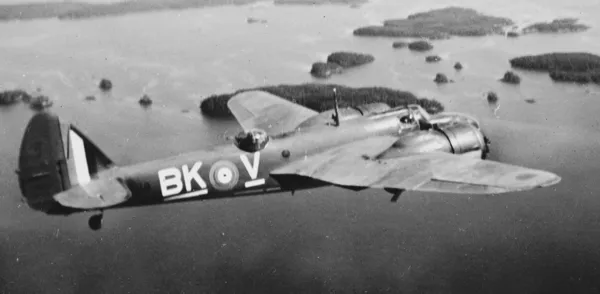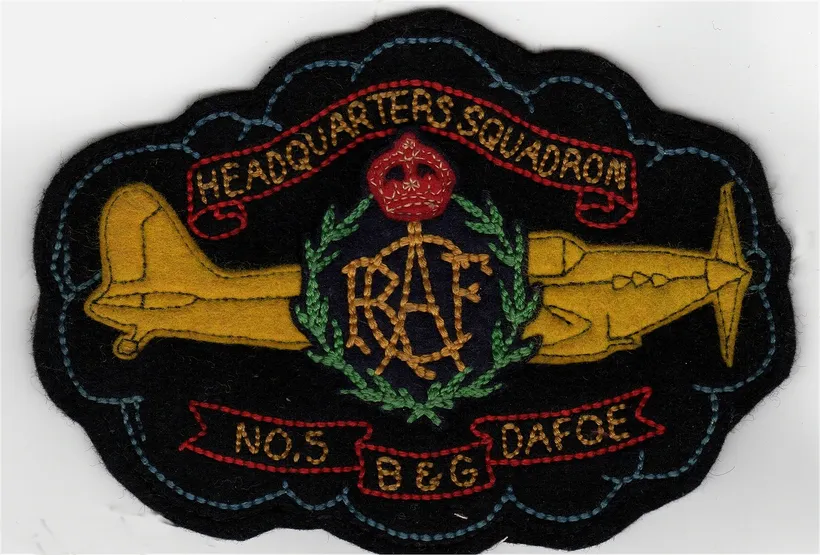Wilson, Douglas Kitchener (Flight Sergeant)
Killed in Flying Accident 1944-February-08


Birth Date: 1917
Born:
Parents: Son of John Johnson Wilson and Marie Mildred Wilson, of Vancouver, British Columbia; husband of Molley Wilson, of Winnipeg.
Spouse: Husband of Molley Wilson, of Winnipeg.
Home: Vancouver, British Columbia
Enlistment:
Enlistment Date: unkown date
Service
RCAF
Unit
5 BGS- Bombing & Gunnery School
Base
Dafoe, Saskatchewan, Canada
Rank
Flight Sergeant
Position
Pilot
Service Numbers
R/91753
Crew or Other Personnel
Bolingbroke 10195
Bolingbroke serial: 10195

Fairchild Bolingbroke Mk. IV, RCAF (Serial No. 9118), coded BK-V, No. 115 (Bomber Reconnaissance) Squadron, Patricia Bay, British Columbia, 1942.
The Bristol Fairchild Bolingbroke was a maritime patrol aircraft and trainer used by the Royal Canadian Air Force during the Second World War. Built by Fairchild-Canada, it was a license-built version of the Bristol Blenheim Mk IV bomber.
In 1935, the British Air Ministry issued Specification G.24/35 to procure a coastal reconnaissance/light bomber to replace the Avro Anson. Bristol proposed the Type 149, based on its Blenheim Mk I, with Bristol Aquila engines to give greater range. While the Air Ministry rejected this proposal, a Blenheim Mk I, retaining its Mercury VIII engines, was converted as a Type 149 (Blenheim Mk III) for the general reconnaissance role.The nose was lengthened to provide more room for the bombardier, with the upper left surface of the nose being scooped out to maintain pilot visibility during takeoff and landing.
The longer range also fulfilled a Canadian requirement for a maritime patrol aircraft. Consequently, Fairchild Aircraft Ltd. (Canada) of Quebec started production of the Blenheim Mk IV as the Bolingbroke (the originally intended name for the Blenheim IV). This type was nicknamed the "Bolly". After a small run of aircraft constructed to British specifications, as the Bolingbroke Mk I, Fairchild switched production to the Bolingbroke Mk IV with Canadian and American instruments and equipment. These versions also included anti-icing boots and a dinghy. One of the early Mk IV variants was the Bolingbroke Mk IVW which was powered by two 825 hp (615 kW) Pratt & Whitney SB4G Twin Wasp Junior engines. Incapable of maintaining altitude on one engine, the normal bomb load was reduced to 500 pounds on these aircraft to compensate for the low engine power. The most-produced variant was the Bolingbroke Mk IVT trainer, of which 457 were completed. A total of 626 Bolingbrokes were produced. Wikipedia
Aircraft Images
Bolingbroke 10195
Bolingbroke Mk. IVT 10195
Fitted with Mercury XX STAR engines. Delivered to long term storage, issued from storage on 12 July 1943. Completely destroyed by fire, following a Category A crash on 8 February 1944. With No. 5 Bombing & Gunnery School at Dafoe, Saskatchewan when it crashed. Engines cut after throttles were opened for an overshoot, aircraft struck the ground in a steep bank. Pilot Flight Sergeant D.K. Wilson killed in crash, gunnery instructor Sgt. R. Hemmingway, RAFVR died the next day. Three RNZAF Leading Aircraftman students injured. To No. 8 Repair Depot on 14 March 1944, for write off.1943-05-12 Taken on Strength No. 2 Training Command 2019-08-20
1944-February-08 Accident: 5 Bomb & Gunnery School Loc: Aerodrome Names: Hemmingway | Horseley | Peterson | Willcox | Wilson
1944-03-14 Struck off Strength Struck off, reduced to spares and produce 2019-08-20
Unit Desciption
5 BGS (5 Bomb and Gunnery School)
The Bombing and Gunnery School (B&GS) offered instruction in the techniques of bomb aiming and aerial machine gunnery to Air Observers, Bomb Aimers, and Wireless Air Gunners. These schools required large areas to accommodate their bombing and gunnery ranges, and were often located near water. The Avro Anson, Fairey Battle, Bristol Bolingbroke, and Westland Lysander were the standard aircraft used at B&GS schools.
RCAF.info - RCAF Station Dafoe SK
![]() Saskatchewan Virtual War Memorial - 5 BGS History
Saskatchewan Virtual War Memorial - 5 BGS History
![]() Vintage Wings Ghosts Of Saskatchewan
Vintage Wings Ghosts Of Saskatchewan

